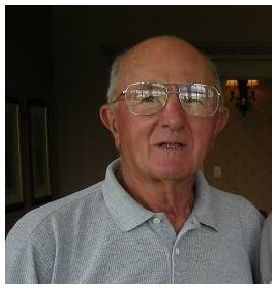January 2000 Article Wild Cards Archives:
Tennis Server
|

 |
by Tony Severino Certified Instructor 4A Professional Tennis Registry
Almost all of your tennis instruction to date undoubtedly concentrated on the dominant hand, the one holding the racquet. Your non-dominant hand, the one without the racquet in it, is that 'other' hand. For too many players, it is the hand that usually just hangs around out there until the point is over. What else can it do? Think about this: the non-dominant hand has a role to play in every stroke. There is virtually no stroke in which that 'other' hand does not have a job to do! Let's examine that 'other' hand in some strokes. Serve: it lifts the ball to the contact point and, left extended, helps keep your head up and steady. Then on follow thru, it helps maintain your balance. If your service toss is giving you trouble, try cupping the ball in your palm and lifting it to the contact point. "Toss" is a very bad word for this function. Think of it as "placement of the ball." It is essential that the ball be placed precisely in the contact area in serving. The 'other' hand does that. Forehand: it points to the ball to gauge the contact point. It also provides balance. Some teachers have both hands go back together and forward together to cue body torque and weight shift into the shot. That's a good practice too. One-hand Backhand: on the backswing both hands stay on the racquet. As the racquet starts forward, the hands separate and begin to move in opposite directions. With your shoulders parallel to the sideline, the dominant hand moves the racquet forward to the ball. The 'other' hand moves sharply away from the racquet in the opposite direction. This adds some zing to the stroke, brought about by the 'other' hands' counter movement. Two-hand backhand: in this stroke the 'other' hand becomes the dominant hand. The two-handed backhand is really a forehand on the non-dominant side. Your real dominant hand contributes to the deception of the stroke by controlling the stroke's direction. Forehand Volley: your head and your forward foot are most important in the volley, but it is the non-dominant hand that leads the charge to the ball! Move your head towards the approaching ball and stomp your forward foot as your strike the ball. At the same time the 'other' hand also closes on the ball just as the racquet strikes it, helping keep the racquet head up and out in front. Backhand Volley: in this stroke the 'other' hand puts some zip into the volley by moving in the opposite direction from the racquet, similar to a baseball umpire's 'safe' signal. As the racquet starts forward, the 'other' hand moves backward sharply away from the racquet, adding an equal and opposite punch to the stroke. The head, forward foot and racquet have the same job as in the forehand volley. Overhead: basic to the overhead is that you turn and point. The 'other' hand points to the ball and tells you where it is going to fall. Position yourself so that you would catch the ball in your outstretched non-dominant hand if you were not going to hit it. Pointing also turns your body so you can maneuver up and back easily, maintaining your balance and keeping your head up. Extending the non-dominant hand upward also puts your weight on the rear foot, which is where you want it. That 'other' hand is also the one that blocks the morning sun. Remember to keep that 'other' hand up until contact is made. Lob: Use the 'other' hand for guidance. Use it to point out your lob's trajectory as you swing and follow it up with your racquet from your bent-knees position. You should find some improvement in the accuracy of your lobs by employing that 'other' hand. Half-volley: is really more of a ground stroke than a volley. However, neither of the functions described above applies fully to it. You want to hit the short-hop right at the tape to avoid giving your opponent a high sitter. The 'other' hand provides balance since you are basically reacting to a shot from a bent-knees position. Additional functions: A seldom cited but very important function is holding the racquet in the 'other' hand between points to give your dominant hand a chance to relax. On every stroke the non-dominant hand should grasp the racquet at the throat to maneuver it through grip changes during a point. Used as a counter weight during most strokes, the non-dominant hand helps keep you balanced, much as an acrobat uses his or her hands for stability. Conclusion: The non-dominant hand, that 'other' one, is a valuable resource to your tennis game. Make use of it and watch your game become more dominant. If you wish to provide a comment to the author of this Wild Cards column, please use this form. Tennis Server will forward the comment to the author.
1998 - 2003 | 2004 - Present
This column is copyrighted by the author, all rights reserved.
|



October 2022 Tennis Anyone: Patterns in Doubles by John Mills. September 2022 Tennis Anyone: Short Court by John Mills. |
 You will join 13,000 other subscribers in receiving news of updates to the Tennis Server along with monthly tennis tips from tennis pro Tom Veneziano.
You will join 13,000 other subscribers in receiving news of updates to the Tennis Server along with monthly tennis tips from tennis pro Tom Veneziano. 